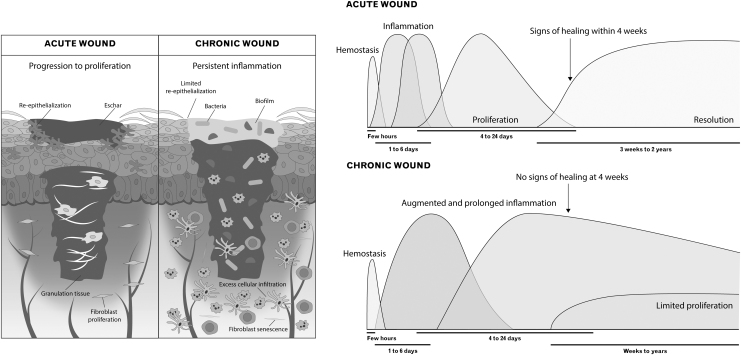Figure 3.
Chronic and acute wounds. Acute wounds typically progress through four phases of healing, with inflammation having two sub-phases, and are characterized by early re-epithelization. Signs of healing tend to occur within 4 weeks. In chronic wounds, hyperproliferation of inflammatory cells, particularly macrophages and neutrophils, results in an augmented and prolonged inflammatory phase. Further, angiogenesis is over-induced, resulting in numerous, but immature and friable microvessels. This establishes a microenvironment that is prone to bacterial infection and biofilm formation. Taken together, these factors limit and delay the proliferative phase and can lead to a lack of resolution even 2 years after wounding.

